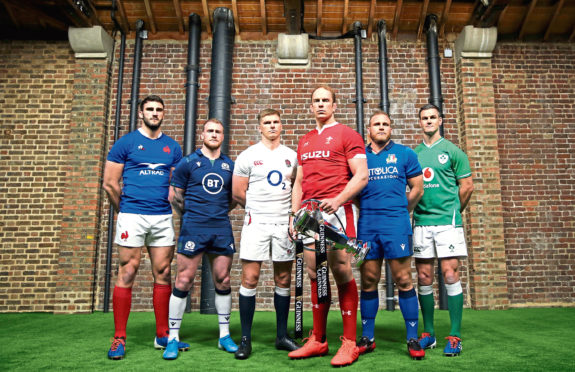It’s TV rights season, and before we get too caught up in what’s to come for the Six Nations contract, there’s time for a little perspective.
In the USA, the NFL and golf’s PGA Tour are due for TV deal renewals in the next couple of years.
The current NFL deal, the biggest sport in the world’s biggest TV market, is worth just shy of $40 billion to the league. That’s billion, not million.
Dependent on a deal between owners and players currently being negotiated – the CBA – the contract in 2022 is only going to be bigger, even if ratings have fluctuated. Last week one of the prime networks CBS signed Tony Romo, a largely unsuccessful former player now a star analyst, to an eye-watering $17 million a year contract to keep him from moving to rival ESPN.
The PGA Tour is set for new deals with CBS and NBC and is set to get an estimated $700m from the networks, up from $400m the last time.
Golf’s light years away from the NFL’s ratings and popularity, but it gets big money because the people who watch are the kind advertisers want to snare – middle-class and affluent.
The Six Nations TV deal currently being finalised is targeting £300 million, but to get that they’ll have to take some of the games behind a subscription paywall, be it Sky, BT or Canal Plus.
In addition, there’s also the spectre of the investment from equity house CVC, which promises £66 million to each of the Six Nations for an equal share of future profits – they’d effectively become a seventh nation.
The CVC figure alone amounts for a full year’s turnover for the SRU and the IRFU. The WRU always seem to be living hand to mouth (even with a £100m turnover), the RFU only went back into profit this year. Even French rugby, with still a year to go on the lucrative £305m deal with Canal Plus for the T14, has their head turned by such figures.
Why are CVC in on this? Well, their background in sports – mostly in F1 – has been to take the lead to maximise TV deals and scoop the profits. In the UK and Europe sports market, without monster networks like CBS, and NBC, that means subscription TV.
It would be naive to think that CVC’s investment, still to be finalised, is not primarily dependent on a guaranteed return from the new TV deal. You can’t imagine one without the other.
This is the position the unions find themselves in. They have a promise of an input of £120 million-odd into their coffers, to spend how they see fit (we’ll get to that in more detail below). But it requires them to take a significant proportion of their prized and treasured annual event away from the majority of the public gaze.
The Six Nations is rugby’s annual shop window. For seven weeks, the sport gets prime attention – much to the hilarious tantrumming of my many rugby-hating friends furious their beloved soccer has to give up even 15 seconds of endless saturation coverage.
It’s the only rugby the majority of the public watch. In Scotland, it’s the only rugby the majority of the public even attend, live.
There are plenty of scare stories about sports moving behind the subscription paywall. Cricket is the premier example, now so desperate for free-to-view coverage after years with Sky’s limited audience that they’ve conjured a whole new, Frankenstein-ish version of the game which they’re giving away to the BBC.
Participation levels have slumped in cricket, and also in golf. There’s plenty of societal reasons for those, but outside of soccer, which is strong enough to cope and still dabbles with free-to-view, the evidence is fairly clear that TV paywalls slash back your grassroots.
Rugby has already got a serious participation problem. How can removing the crown jewel from the easy access of the public help with that?
One would be reassured if the governing bodies seemed to have a real duty of care about grassroots, but everything the SRU have done in the last few years seems content to let them wither while making rugby a sport played only by those good enough for an elite level.
It makes one think what th SRU would actually do with the £120m it got from a CVC/Six Nations TV windfall. The way the recently rejected governance restructuring was slanted, it seemed like access to future money was being ring-fenced away from the clubs who badly need even a modest share of it.
Start a third pro-team? Re-furbish Murrayfield into a proper 21st century stadium? Pay the players more, maybe? (One thing the SRU should impose is that no-one in the Scottish game gets even near £1 m a year unless they’re actually handling a rugby ball).
But what would be the point of that if no-one was watching, and just as bad, no-one was playing even social rugby?
What would be the point of all the riches if rugby diminishes to a minor sport in Scotland, the elite sector fed with talent only by the expensive public schools, effectively polo without horses?
That’s the balance that has to be struck, and it’s a tough one. Rugby needs investment – everyone needs money – but it also needs the casual, non-committed public to be engaged, even if it’s only for seven weeks a year.
Behind a paywall, the Six Nations’ unique appeal will surely be lost.
